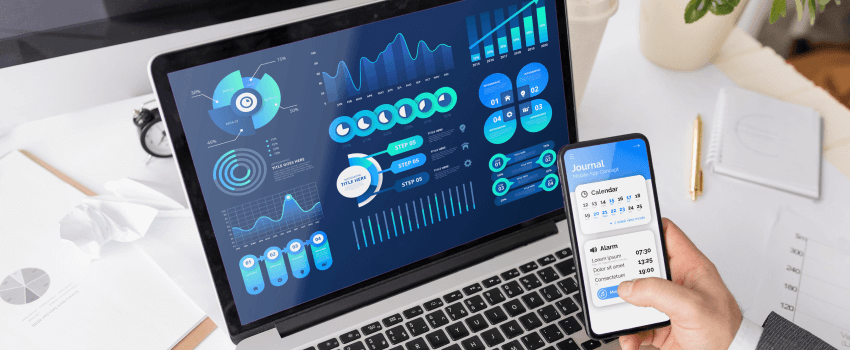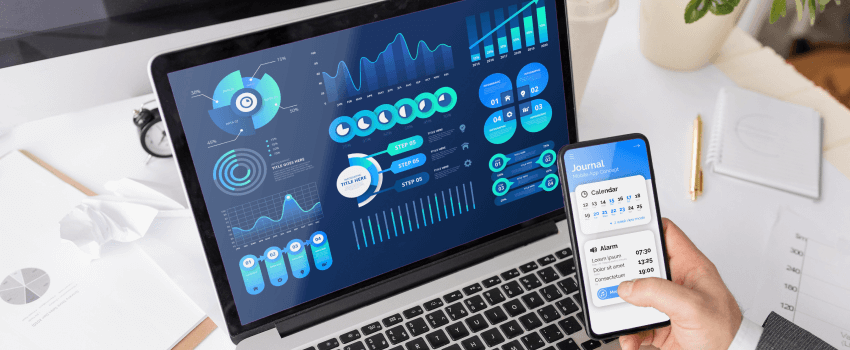
In the fast-paced world of digital decision-making, one thing has become crystal clear: great business intelligence starts with great data. But it’s not just any data, it’s real-time, reliable, and instantly accessible. As organizations race to unlock faster insights, real-time data integration has emerged as the key to maximizing BI platforms’ potential.
According to Gartner, over 50% of enterprise data will be generated and processed outside of traditional data centers by the end of 2024. That means static data pipelines and overnight batch processing are no longer viable for companies looking to stay competitive. Real-time data streaming is enabling instant decision-making, optimized operations, and smarter business strategies.
Why Real-Time Data Integration Matters in BI
Real-time data integration involves connecting various data sources, whether CRM systems, IoT sensors, or transactional apps, and making that data available to BI tools as it’s generated. This continuous flow ensures decision-makers are acting on the most current information, not yesterday’s reports.
Key advantages include:
- Instant insights for faster decisions: Business leaders can act on data as it happens, reducing delays and improving responsiveness.
- Optimized customer experiences: Real-time behavioral data enables businesses to tailor content, support, or offers instantly.
- Operational agility: Teams can monitor supply chains, sales performance, or system health without lag.
- Early risk detection: Anomalies are spotted before they become liabilities.
For organizations looking to build robust streaming architectures, working with a trusted Python Development Company ensures scalable, secure integration that fits both legacy systems and modern BI pipelines.
What Makes Real-Time BI Work? 5 Core Capabilities
If your BI system is the engine, real-time data is the fuel. But to make it all run smoothly, you’ll need the right setup. Here’s what matters most:
1. Scalable Data Integration Frameworks
A real-time BI system must ingest data from multiple, high-volume sources. This requires robust ETL/ELT pipelines that can scale dynamically, especially in cloud-native environments.
2. Low Latency Processing
Speed is everything. Data integration tools need to stream, transform, and load data in seconds, not minutes. Look for platforms optimized for in-memory processing and asynchronous updates.
3. BI Compatibility
Integration shouldn’t stop at ingestion. Real-time data must flow cleanly into BI dashboards (Power BI, Tableau, etc.), updating charts and KPIs without manual refreshes.
4. Security and Compliance
As sensitive data moves through systems in real-time, robust encryption, access control, and audit trails are mandatory. Especially in regulated sectors like finance or healthcare.
5. Data Observability
You can’t manage what you can’t see. Real-time observability tools monitor data flow quality, detect anomalies, and alert teams to bottlenecks or schema changes.
Explore insights: The Rise of AI with Python: Use Cases, Frameworks & What’s Next
| Industry | Use Case | Business Impact |
| Retail | Live sales tracking and inventory sync | Reduces stockouts, improves margins |
| Finance | Fraud detection and instant alerts | Protects revenue, boosts trust |
| Manufacturing | IoT-powered machine monitoring | Reduces downtime, saves maintenance |
| Healthcare | Real-time patient monitoring and alerts | Enhances care, reduces response time |
| SaaS | Behavioral tracking for usage-based pricing | Increases upsell and retention |
Common Challenges and How to Overcome Them
Implementing real-time BI isn’t without hurdles:
- Legacy Infrastructure: Older systems may lack the performance for streaming data.
- Data Quality Gaps: Inconsistent inputs can erode trust in real-time dashboards.
- Team Skills Gaps: Analysts and engineers may need training on streaming frameworks.
- Cost Overruns: Without careful architecture, cloud costs can spiral.
Solution? Prioritize platforms with low-code configuration, built-in observability, and auto-scaling to keep infrastructure lean and responsive.
Final Thoughts: Making BI Future-Proof
The success of modern BI platforms is increasingly tied to how fast and accurately they can turn raw data into decisions. By embracing real-time data integration, organizations not only future-proof their analytics investments but also unlock significant ROI, faster insights, smarter decisions, and stronger market positions.
The post How Real-Time Data Integration is Powering Modern BI Platforms appeared first on Inexture.
Source: Read MoreÂ

